Abstract
Because large variations occur in the concentrations of viruses that enter treatment plants from season to season and from place to place, and even during a 24-hour period, field studies on the removal of viruses by treatment processes require temporal coordination of sampling. Quantitative methods for concentrating viruses must be developed to measure accurately the efficiency of virus removal by treatment processes in field situations. Extended settling, and storage of sewage and raw waters, reduce virus levels and deserve further study. Oxidation ponds must be reevaluated with regard to temporal matching of influent and effluent samples and with special care to prevent short-circuiting. Conventional and modified activated sludge plants must be reassessed with temporal matching of samples. Coagulation of viruses with metal ions requires field evaluation, and virus removal by filtration through sand and other media, under constant salt and organic loadings, needs both laboratory and field evaluation. A comparative study of water disinfectants related to specific conditions is needed. The toxicity, carcinogenicity, and teratogenicity of products resulting from disinfection must also be assessed. Other matters for investigation are: methods for quantitatively detecting viruses adsorbed on solids, the virus-removal capability of soils, better virus indicators, virus concentration in shellfish, the frequency of infection in man brought about by swallowing small numbers of viruses in water, the epidemiology of virus infection in man by the water route, the effect of viruses of nonhuman origin on man, and the occurrence of tumour-inducing agents in water.
Full text
PDF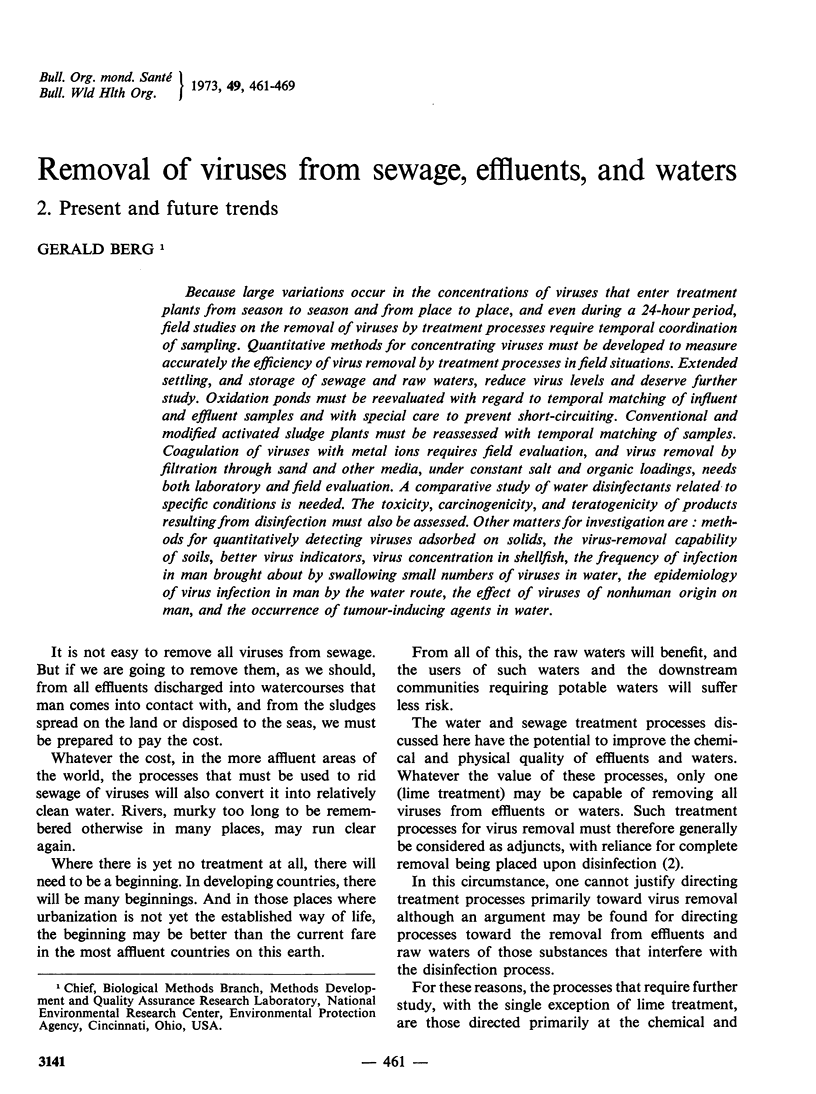
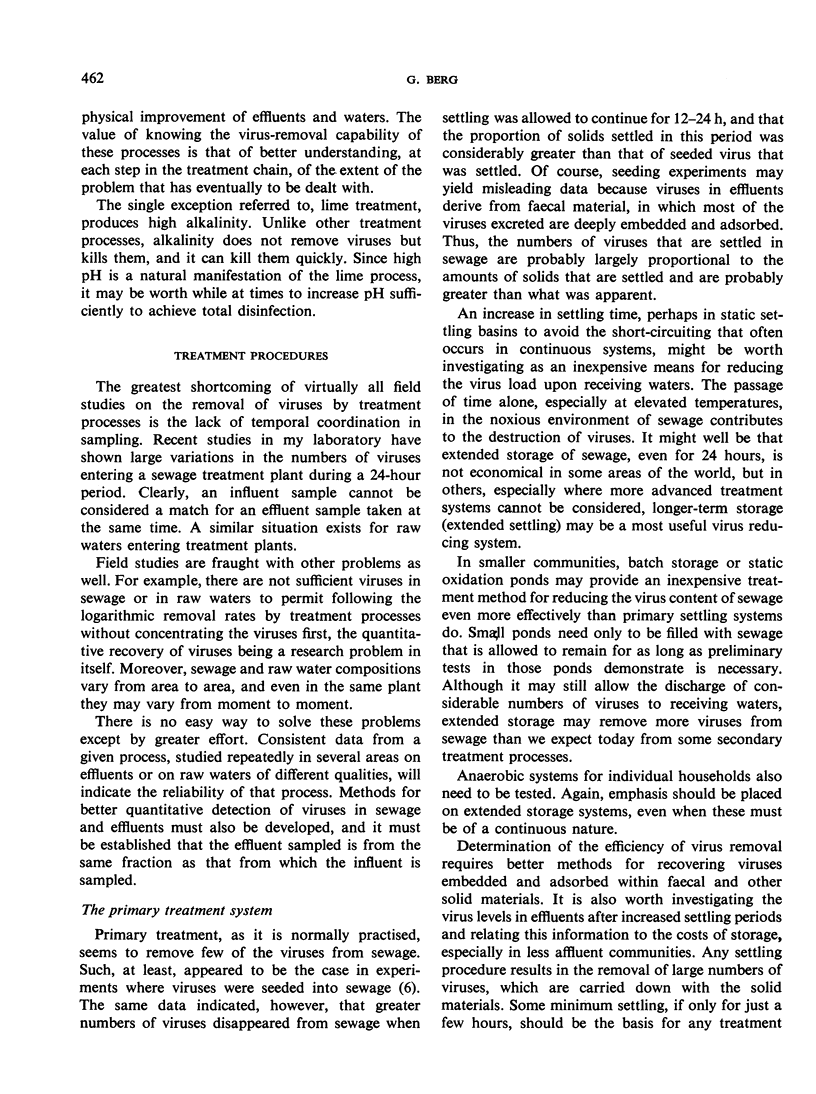
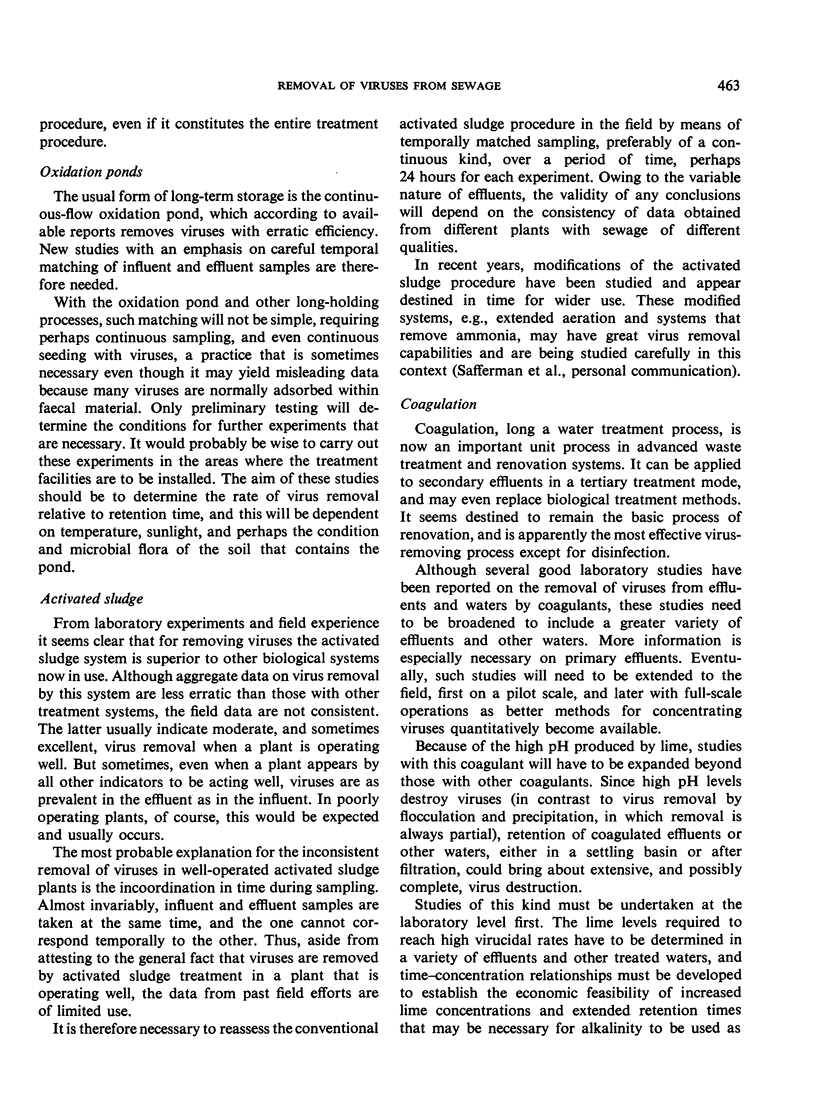
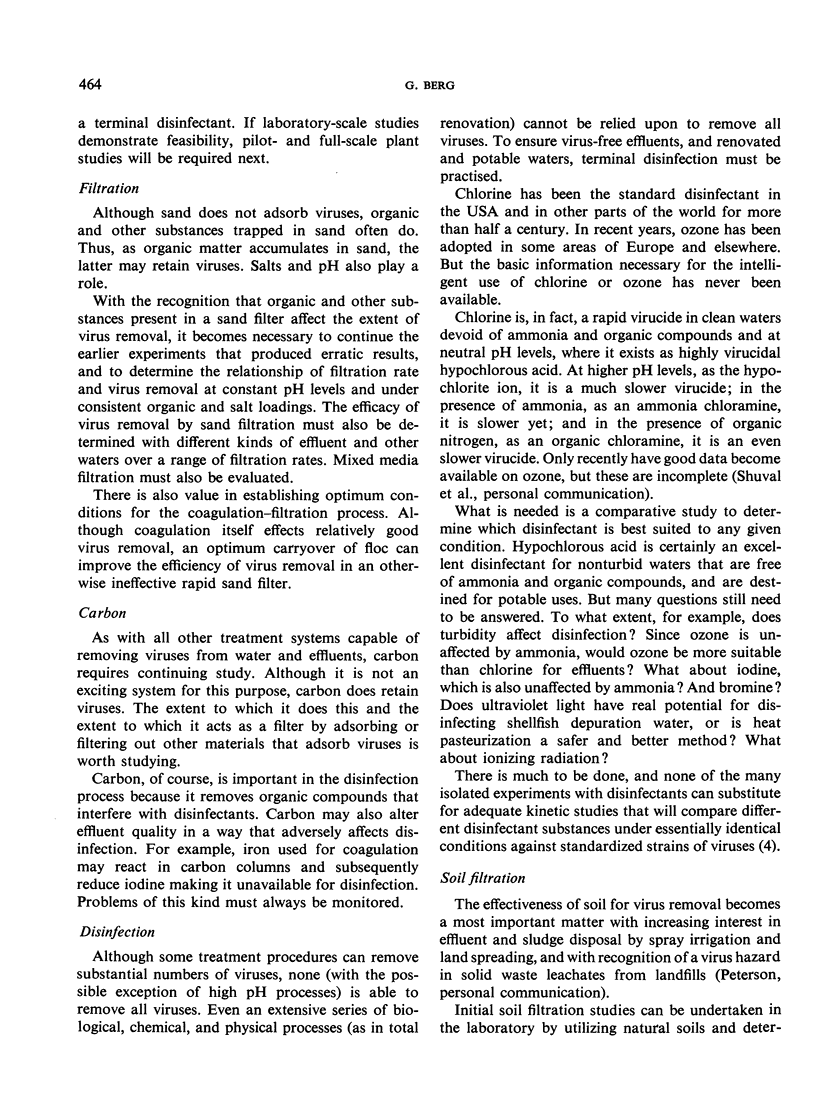
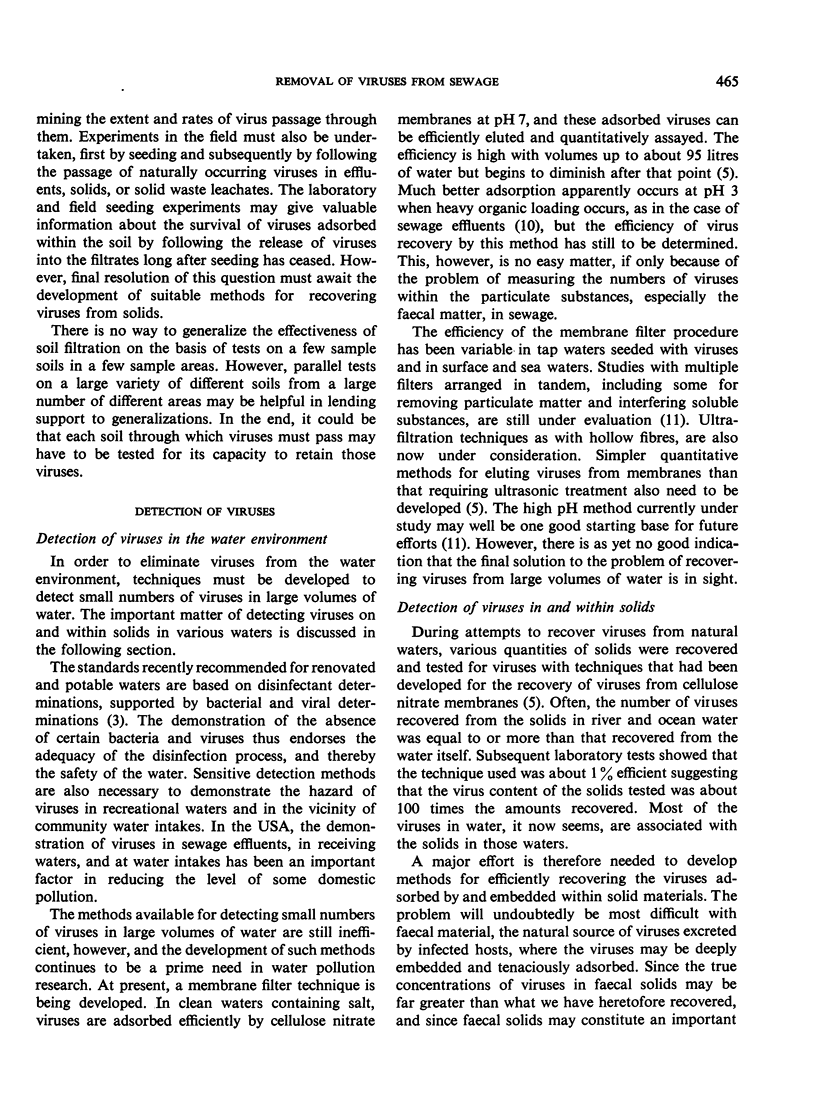
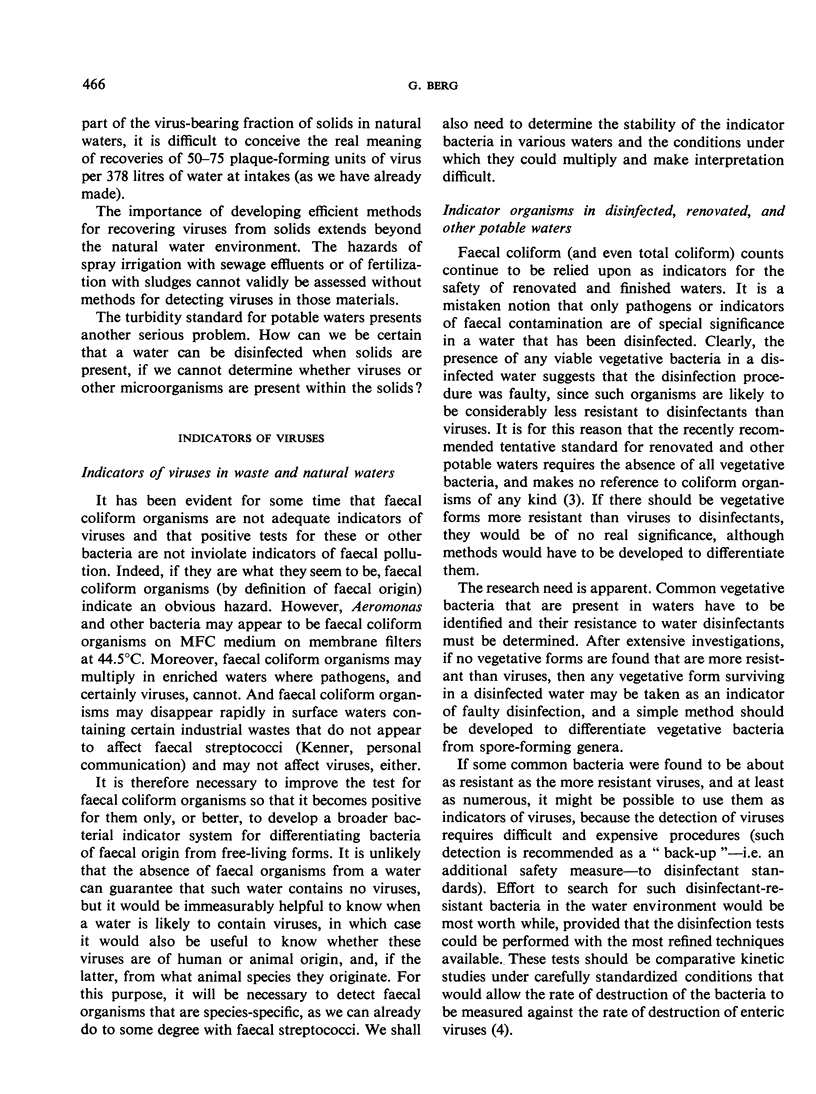
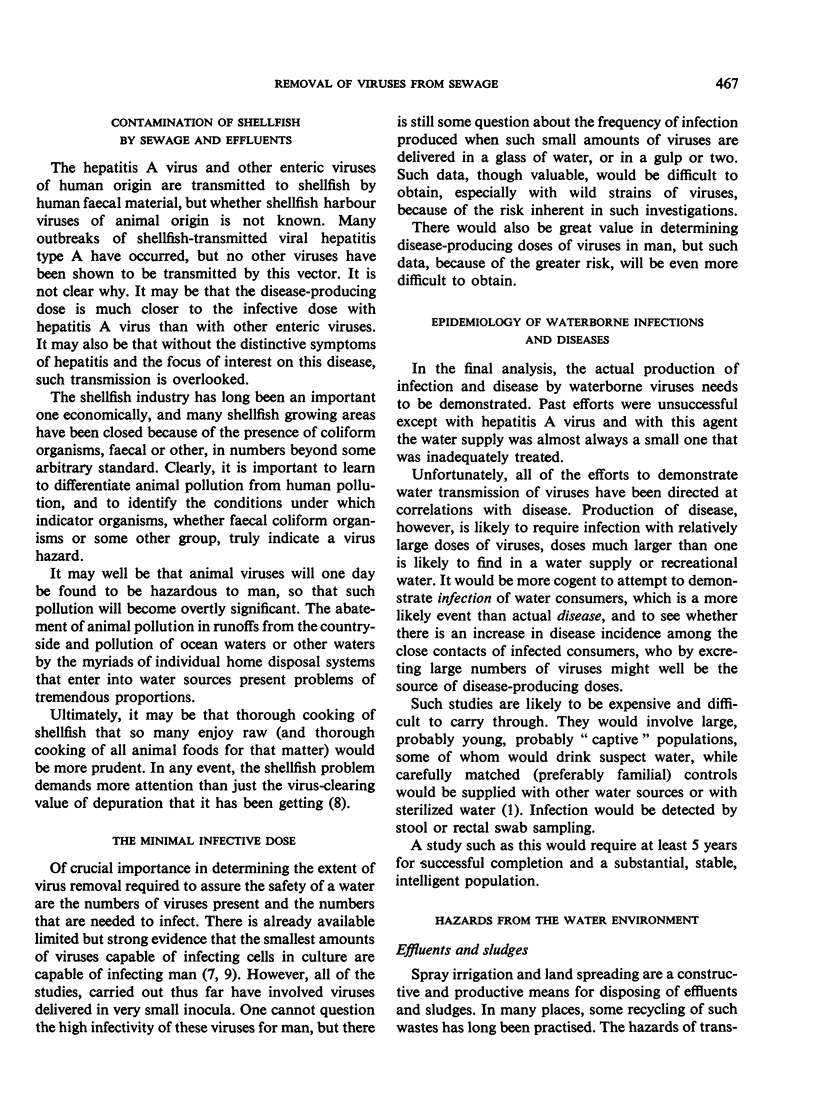
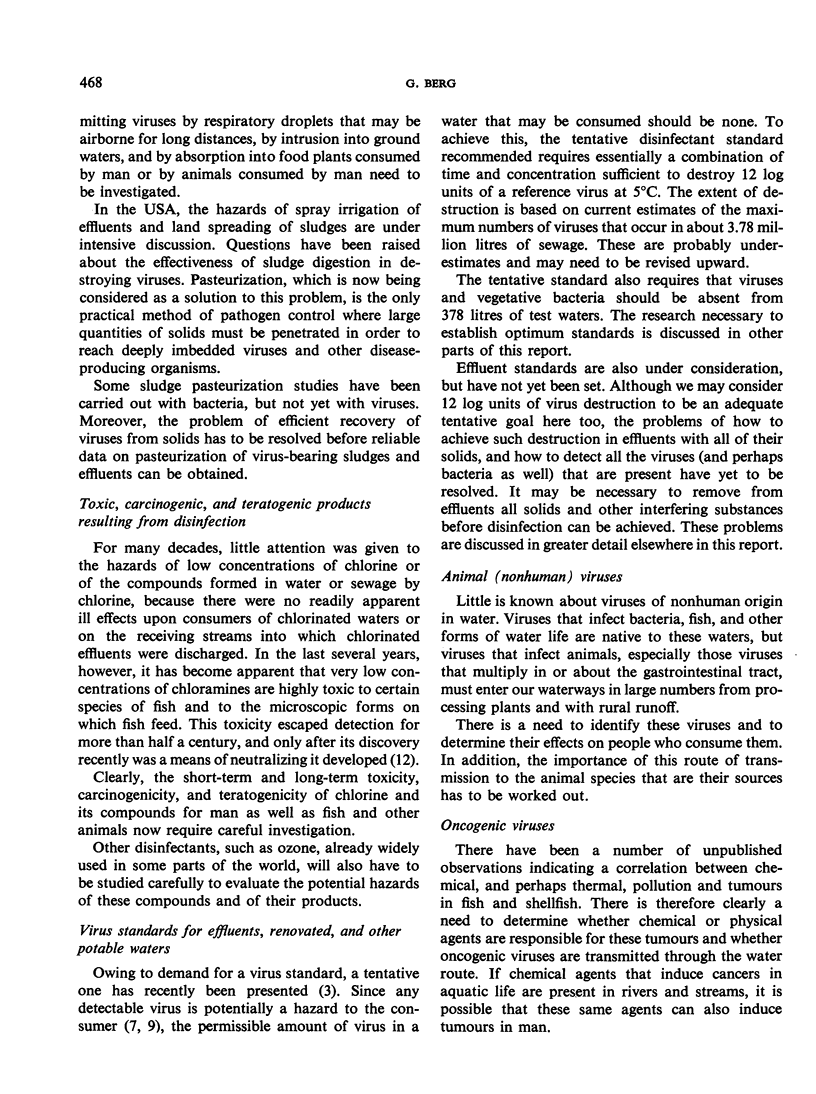

Selected References
These references are in PubMed. This may not be the complete list of references from this article.
- Berg G., Dahling D. R., Berman D. Recovery of small quantities of viruses from clean waters on cellulose nitrate membrane filters. Appl Microbiol. 1971 Oct;22(4):608–614. doi: 10.1128/am.22.4.608-614.1971. [DOI] [PMC free article] [PubMed] [Google Scholar]
- Berg G. Virus transmission by the water vehicle. 3. Removal of viruses by water treatment procedures. Health Lab Sci. 1966 Jul;3(3):170–181. [PubMed] [Google Scholar]
- Katz M., Plotkin S. A. Minimal infective dose of attenuated poliovirus for man. Am J Public Health Nations Health. 1967 Oct;57(10):1837–1840. doi: 10.2105/ajph.57.10.1837. [DOI] [PMC free article] [PubMed] [Google Scholar]
- Wallis C., Henderson M., Melnick J. L. Enterovirus concentration on cellulose membranes. Appl Microbiol. 1972 Mar;23(3):476–480. doi: 10.1128/am.23.3.476-480.1972. [DOI] [PMC free article] [PubMed] [Google Scholar]


